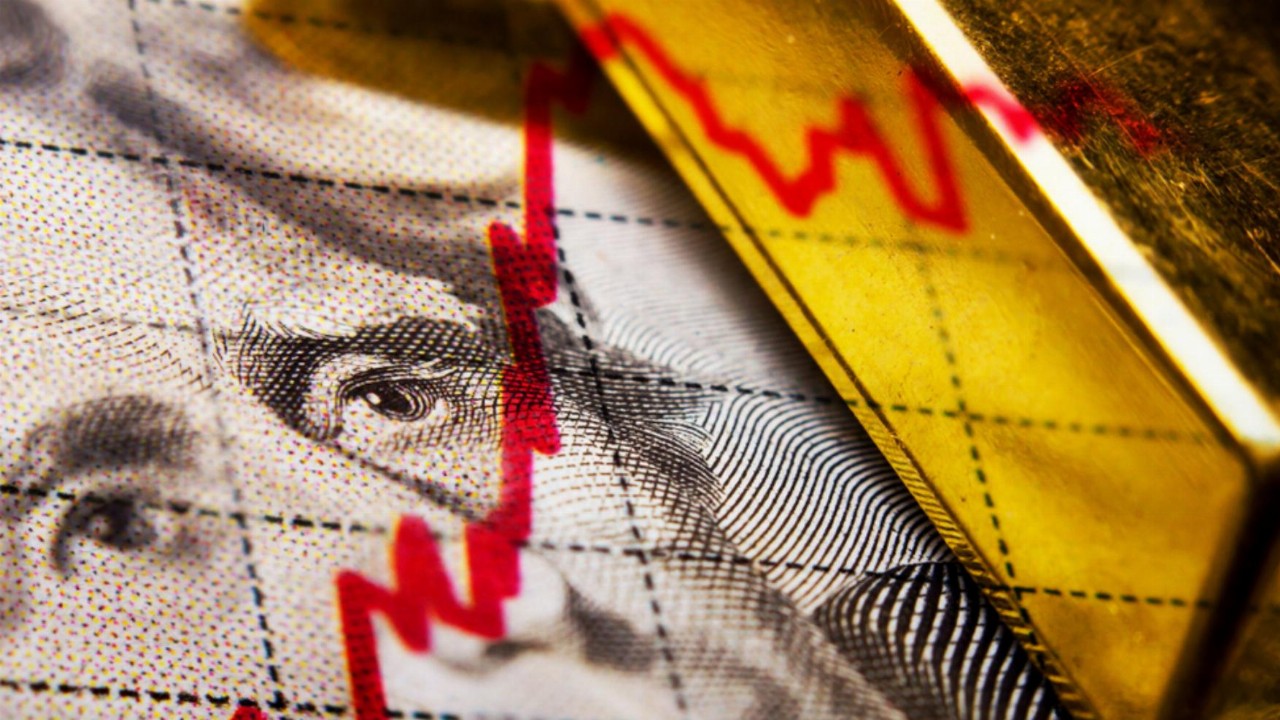- Over the past week, a stellar rally in global tech stocks has reversed
- The tech bubble burst and the Nasdaq entered a technical correction
- At the same time, the spot price of gold followed tech’s trend — slipping over five sessions before an overnight recovery yesterday
- The gold price is likely going through the same pattern as it did when the COVID-19 pandemic struck in March, albeit on a lower scale
- Fresh economic concerns are causing a panic-driven sell-off, which gives bargain hunters a chance to top up on gold at a lower price
- On the ASX, the trend is clear: while the spot price gold might follow global sentiment to a degree, demand for the precious metal is still strong
As COVID-19 uncertainty drives the price of gold higher, the precious metal has solidified its reputation as a “safe haven” stock.
Yet, after gold hit its all-time high of more than US$2070 per ounce (roughly A$2847.08) in early August, the spot price of the metal has been trending largely sideways ever since.
It seems despite the ongoing spread of the coronavirus, the spotlight has been thrown off of gold and onto tech.
The world’s top tech players, such as Apple, Microsoft, and even Australian fintech darling Afterpay, staged a stellar rally after the March slump until the bubble burst and the tech world went through a major correction over the past week.
This has largely set the tone for global markets over recent trading sessions, and not even gold have been able to escape the ripple effect.
This begs the question: has the outlook for the yellow metal changed in light of the big tech swings?
Pandemic protection
Firstly, it’s important to understand why gold has been so solid while markets scramble to survive the pandemic.
The driving force behind gold’s performance in times of economic turmoil is the fact that gold will always have a buyer.
Sellers have their pick of junk bonds and stocks to dump to stay financially stable if they find themselves in a pickle. However, in an economic crisis — such as once-in-a-lifetime global pandemic — buyers for stocks and bonds are far and few between.
This spurs a sudden sell-off of gold as investors panic, sending the spot price of the metal into a slump. However, bargain hunters then pick up the metal at its cheaper price and the price surges once more.
This happened in the 2008 Global Financial Crisis (GFC), and the pattern was repeated in the COVID-19 pandemic.
The spot price of gold bottomed out under US$1500 per ounce in March, but surged just days later.
Tech correction
Despite gold’s general resistance to wider market influence, the metal’s spot price followed the general movements of the world’s biggest tech index over the past week.
The Nasdaq and the price of gold both started September strong, but dipped over five trading sessions before moving slightly higher the most recent session.
The world’s biggest “stay at home” stocks were all struck major blows. In a matter of days, Apple’s share price retreated almost 16 per cent. Microsoft slumped 12.5 per cent. Alphabet, which runs Google, lost more than 11 per cent. Zoom nosedived 23 per cent.
What’s more, nothing seemed to cause the sell-off outside of general market panic about bloated valuations.
And this could be the reason gold has followed tech’s trend; renewed market uncertainty is causing a repeat of the price movements from March, albeit on a smaller scale.
Tech’s correction has renewed economic fears, prompting the fall in gold as weak hands cash out. Of course, this will, in turn, create a new buying opportunity for strong hands.
UBS, the world’s biggest wealth manager, certainly seems to think gold has further to run. According to Business Insider, UBS senior portfolio manager Charles Day said though gold’s rally has paused, it’s still a good idea for investors to allocate around 10 per cent of their portfolio to the precious metal.
This comes after big banks advised the ultra-wealthy of the world to hold up to 10 per cent of the portfolio in gold back in June. Most private banks recommended only a tiny amount of gold holding before the COVID-19 crisis.
ASX Gold Stocks
While, ordinarily, the gold price majorly influences gold stocks, the most recent slump in the spot price has had a muted effect on listed gold producer’s shares.
The All Ordinaries Gold Index (AXGD) has been trending sideways since the start of September until it spiked today.
Yet, it seems Australian investors are still more excited by the prospect of new gold than the operations of an established producer.
For example, index heavyweights Newcrest Mining (NCM) and Northern Star (NST) have largely moved with the price of gold. That is, until this afternoon, when Newcrest revealed some encouraging exploration results from its Havieron Project in Western Australia. Newcrest subsequently outperformed the price of gold and gained 1.79 per cent.
WA-based De Grey Mining (DEG), on the other hand, is continuing its miracle 2020 share price run, completely ignoring the stalling price of gold and almost doubling in value in the last month alone.
This week, the company entered a trading halt to raise fresh capital for more exploration. Shares in De Grey have surged from five cents each throughout January to $1.44 before they were frozen.
Thus, the trend on the ASX is clear. While gold’s spot price might follow global sentiment to a degree, demand for the precious metal is still strong.








